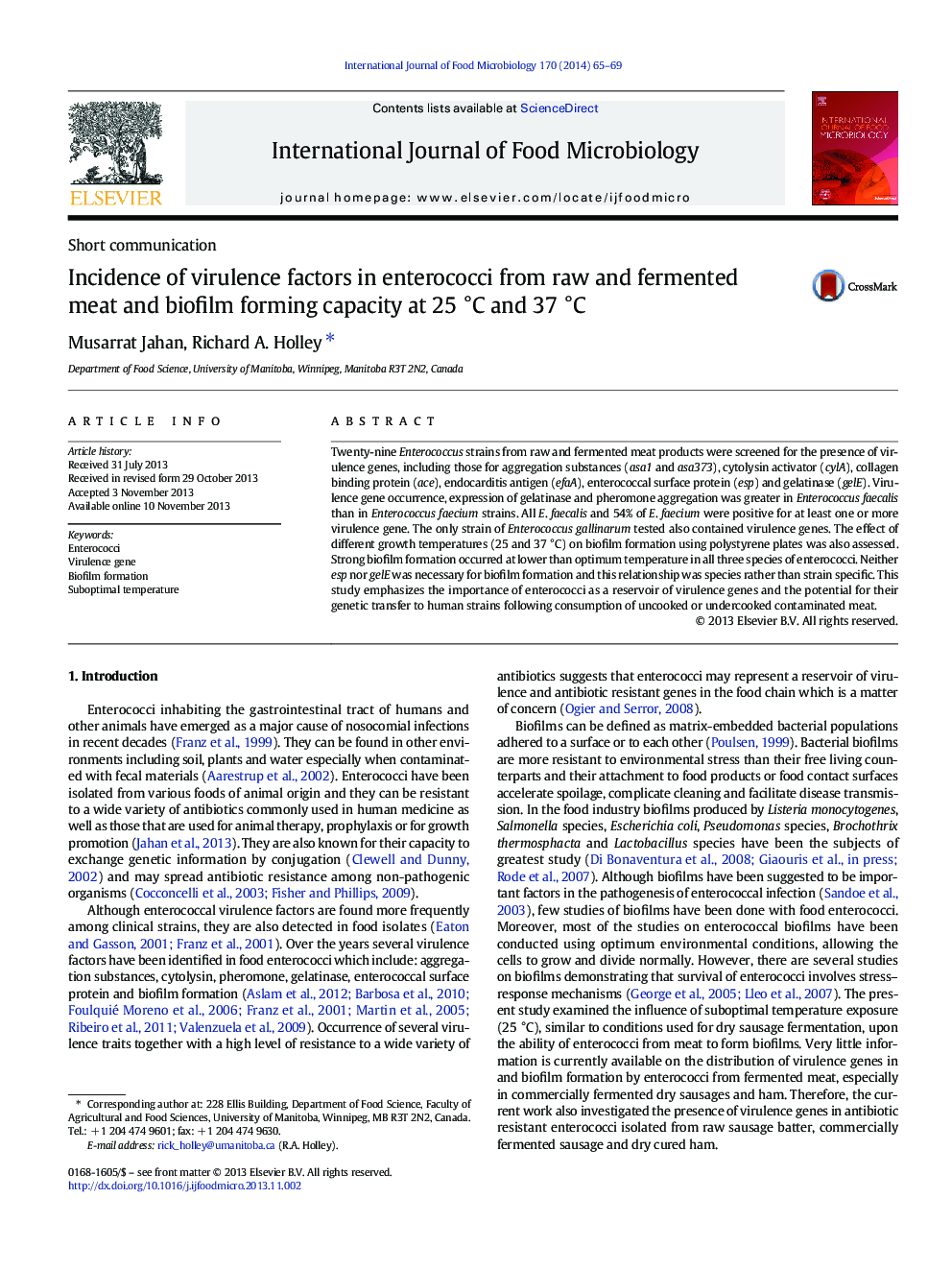| Article ID | Journal | Published Year | Pages | File Type |
|---|---|---|---|---|
| 4367044 | International Journal of Food Microbiology | 2014 | 5 Pages |
•Virulence genes were more frequent in E. faecalis than E. faecium.•Expression of gelatinase and pheromone aggregation was greater in E. faecalis.•Stronger biofilms were more often found at 25 °C than 37 °C.•Enterococcal biofilm formation depends on factors other than esp and gelE.
Twenty-nine Enterococcus strains from raw and fermented meat products were screened for the presence of virulence genes, including those for aggregation substances (asa1 and asa373), cytolysin activator (cylA), collagen binding protein (ace), endocarditis antigen (efaA), enterococcal surface protein (esp) and gelatinase (gelE). Virulence gene occurrence, expression of gelatinase and pheromone aggregation was greater in Enterococcus faecalis than in Enterococcus faecium strains. All E. faecalis and 54% of E. faecium were positive for at least one or more virulence gene. The only strain of Enterococcus gallinarum tested also contained virulence genes. The effect of different growth temperatures (25 and 37 °C) on biofilm formation using polystyrene plates was also assessed. Strong biofilm formation occurred at lower than optimum temperature in all three species of enterococci. Neither esp nor gelE was necessary for biofilm formation and this relationship was species rather than strain specific. This study emphasizes the importance of enterococci as a reservoir of virulence genes and the potential for their genetic transfer to human strains following consumption of uncooked or undercooked contaminated meat.
